“The earth laughs in flowers,” Ralph Waldo Emerson, a prolific American poet and essayist, once said. This quote seems true when you notice dazzling little blossoms dancing in the wind. They are so attractive that by cutting them and placing them in a vase, you can effortlessly turn the barest space in your house into an aesthetic one.
Most flowers, however, start wilting within a week, and you have to look for fresh ones. That’s where lisianthus comes to the rescue! Lisianthus, meaning smooth flower in Greek, has stunningly beautiful blooms (lasting up to three weeks) you just can’t help but fall in love with.
If you, like us, can’t resist the charm of these graceful flowers, the following guide will help you bloom the perfect lisianthus at home. You can use it to create beautiful bouquets or floral arrangements, enhancing the beauty of any corner of your house.
Lisianthus: The Rose Look-Alike with a Bouquet of Benefits
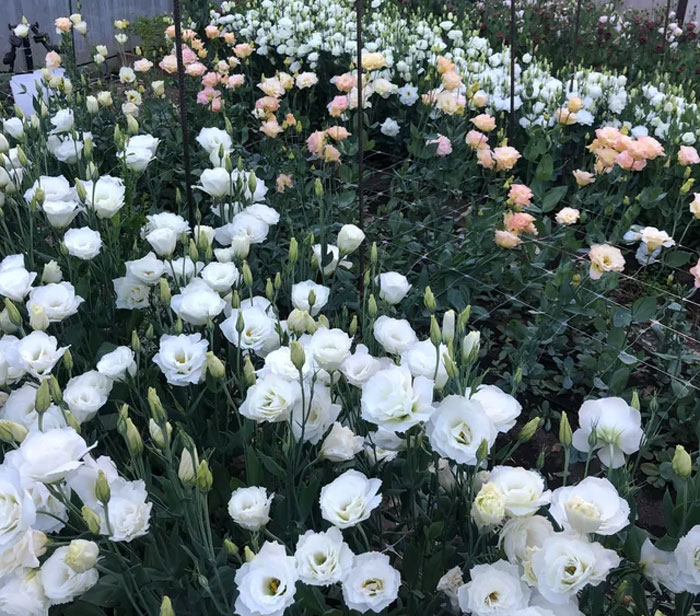 Image credits: LonelyFleur
Image credits: LonelyFleurLisianthus (Eustoma russellianum) are also called lizzies, Texas bluebells, or prairie gentian. This native wildflower reappears each year in fields and prairies. The lisianthus plants also grow in ditches. To thrive in such areas, they have gray/silver or green foliage that’s smooth and waxy, almost like a succulent. Once established, this plant can be pretty drought-tolerant.
Lisianthus flowers have incredible ornamental value, making them the favorites of florists. They look like roses (minus the thorns) but are more affordable, require less maintenance, and cut flowers last longer. They bloom from June or July to September or October. These bell-shaped, elegant blooms have white, blue, purple, and pink shades.
Thanks to flower farming and breeding, lisianthus is now available in unique hues like lime green, red, apricot, yellow, eggplant purple, champagne, and even bi-colored picotee (flowers with one color base and a different color on the edges). Cut lisianthus flowers can last for two to three weeks. Typically, these down-right gorgeous blooms are used for bridal bouquets and occasional floral arrangements.
RELATED: Handy Tips To Grow Bird of Paradise Plants With Ease
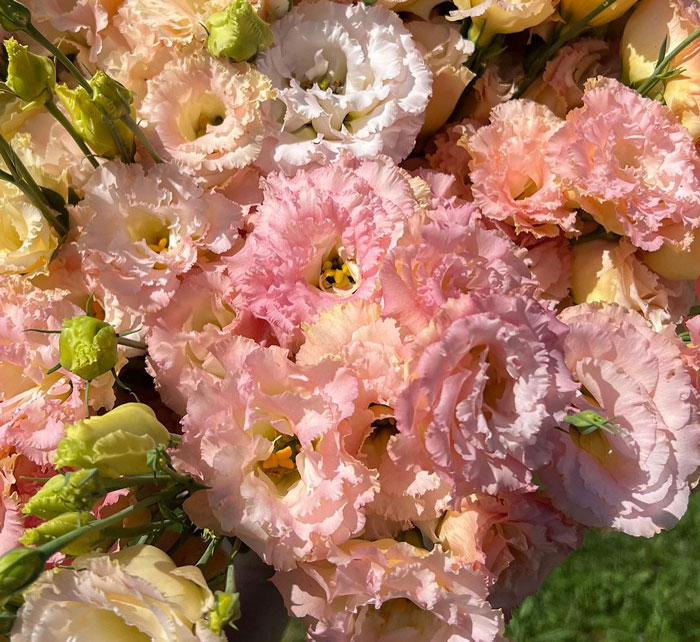 Image credits: ashsflowers
Image credits: ashsflowersLisianthus Basics
- Scientific Name: Eustoma russellianum syn. Eustoma grandiflorum
- Plant Type: Herbaceous perennial, annual
- Size: 1 to 3 feet tall, 1 foot (6 to 12 inches) wide
- Light: Full sun
- Zones: 8 to 10 (USDA)
- Origin: North America, Northern Mexico
Where, When, and How to Plant Lisianthus
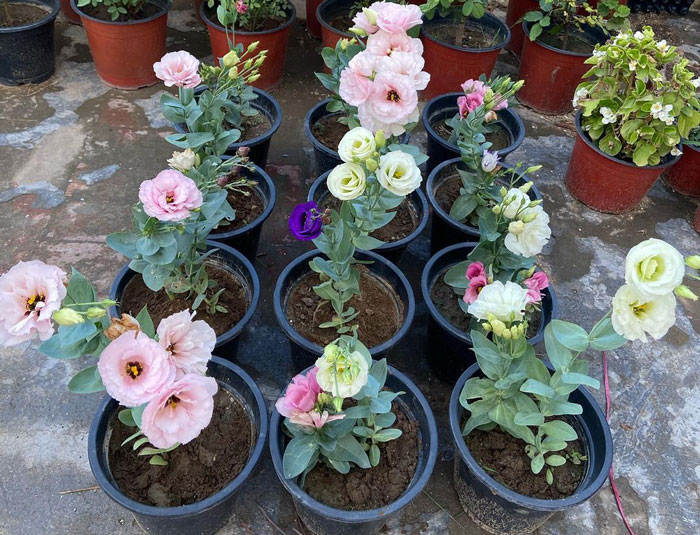 Image credits: gardenvilla_yt
Image credits: gardenvilla_ytLisianthus is typically grown annually, but in zones 8 to 10, it is grown as a biennial and as a perennial in zone 10. They effortlessly spruce up beds and borders. You must stake the taller varieties to get a good supply of flowers. The dwarf varieties are great for outdoor containers or as houseplants.
The fussy lisianthus is challenging to grow from seeds. You must start the process indoors at least 12 to 15 weeks before the last frost. The lisianthus seeds germinate and turn into seedlings very slowly. You can transplant the seedlings outdoors once the soil warms up.
If you purchased seedlings, plant them around two to four weeks before the last frost in spring. They need the soil to be cool for some time. Add compost to neutral or acidic soil (pH 6.5 to 7) with excellent drainage and watch them thrive. In warm regions with rare frost, you can plant them from late autumn to early winter to see the spectacular blooms in spring.
Lisianthus Care Tips
Although it requires less maintenance than a rose plant, there’s no denying that lisianthus is a diva that still requires a lot of care and attention. Here are a few essential tips to help you bloom a healthy lisianthus.
Light, Soil, and Water

Light. Lisianthus loves the sun. A daily exposure to a full sun (for six to eight hours) keeps them happy and healthy. In regions with extremely hot summers, you can move your lisianthus to a shaded spot during afternoons.
Soil. Moist, well-drained soil is ideal for a thriving lisianthus plant. Organic matter like compost, leaf mold, or manure is essential for its development. Ensure the soil doesn’t get soggy by overwatering, or the plant will be susceptible to root rot. Also, avoid underwatering or watering the leaves.
Water. A soaker hose will provide a helping hand in your lisianthus garden bed. Specifically, use a flowering plant fertilizer with a higher potassium content than nitrogen. Feed your lisianthus regularly, and be sure to follow the instructions on the label.
RELATED: Air Plants Require No Soil: Full Care And Design Guide
Temperature and Humidity

The drought-loving lisianthus loves heat but doesn’t tolerate humidity. It doesn’t thrive in humid regions, as high humidity levels are a perfect breeding ground for common diseases. When the days are moderately dry and the nights are warm, give them little moisture.
Pruning

Once your lisianthus blossoms in early summer, it can bloom again with proper pruning. Trim the stems to the basal rosette. Deadheading will promote constant flowering.
Overwintering
 In extremely cold regions, your lisianthus will wither, so you have to uproot it. In areas with warm winters where it’s grown as a perennial, continue deadheading to encourage blooms. Also, reduce regular fertilizing.
In extremely cold regions, your lisianthus will wither, so you have to uproot it. In areas with warm winters where it’s grown as a perennial, continue deadheading to encourage blooms. Also, reduce regular fertilizing. Lisianthus can survive winter in mildly cold regions. You have to cut it to the ground and add a layer of mulch till spring. If the temperature drops further, give it extra protection using a row cover.
Potting and Repotting
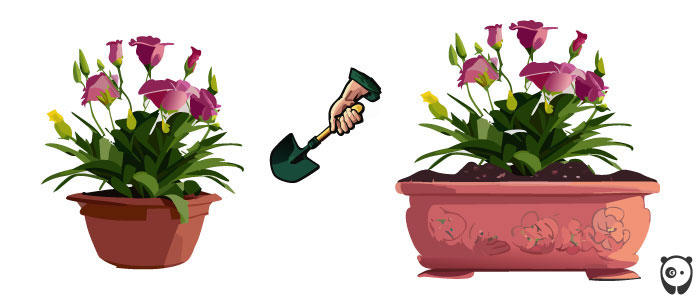 In regions where lisianthus are grown as perennials in outdoor containers, repot them yearly. Ensure that the pot is slightly bigger than the previous one.
In regions where lisianthus are grown as perennials in outdoor containers, repot them yearly. Ensure that the pot is slightly bigger than the previous one.How to Propagate Lisianthus
There are many ways to propagate lisianthus and have those lovely blooms jazz up your front yard, house, or backyard. Follow our quick guide, and you’ll be able to grow your lisianthus from stem cutting, root ball, or seed.
Propagation by Stem Cuttings
Come spring, you can propagate your lisianthus using its stem cuttings.
Step 1: Cut off a stem with at least four sets of leaves, remove the leaves at the bottom, and dip this end in a rooting hormone.
 Step 2: Take a pot filled with moist, loose potting soil and plant your cutting.
Step 2: Take a pot filled with moist, loose potting soil and plant your cutting.  Step 3: Cover the pot with a perforated plastic bag and ensure regular watering to moisten the soil. After a few weeks, you will notice the new growth.
Step 3: Cover the pot with a perforated plastic bag and ensure regular watering to moisten the soil. After a few weeks, you will notice the new growth.
Dividing the Root Ball
In the warm regions where lisianthus are grown as perennials, they can be propagated in winter by dividing their root balls.
Step 1: Trim the entire steam and foliage just above the ground and dig out the whole plant along with the root ball.
 Step 2: Divide the root ball into sections so each has few leaves or growth buds.
Step 2: Divide the root ball into sections so each has few leaves or growth buds. Step 3: Immediately replant these divided sections and give them ample water. You will notice the new growth within a few weeks.
Step 3: Immediately replant these divided sections and give them ample water. You will notice the new growth within a few weeks.
Growing Lisianthus from Seeds
Growing lisianthus from seeds is a tricky and long process, so you will need all of your patience. Lisianthus seeds are so tiny that they are sold in palleted form. In warm regions, you can sow the seeds directly in the garden beds during late summer. But if you want to grow it indoors, here are the steps:
Step 1: Moisten a pot with seed-starting mix and sow the lisianthus seeds.

Step 2: Cover it with a perforated plastic bag, place it under a grow light, and ensure it receives around 16 hours of light daily.
 Step 3: Keep checking that the temperature remains between 70 F and 75 F, and soon a small seedling will appear.
Step 3: Keep checking that the temperature remains between 70 F and 75 F, and soon a small seedling will appear.
 Step 4: Remove the plastic and lower the grow light so it focuses right on the seedling. Ensure you keep the soil moist and feed it a diluted fertilizer weekly.
Step 4: Remove the plastic and lower the grow light so it focuses right on the seedling. Ensure you keep the soil moist and feed it a diluted fertilizer weekly.
 Step 5: The seedling will start growing slowly; it should reach around four inches by spring.
Step 5: The seedling will start growing slowly; it should reach around four inches by spring.

Step 6: Harden it by bringing it outdoors frequently for a week. Once frost season is over, you can transplant it in your garden.
Pests and Diseases
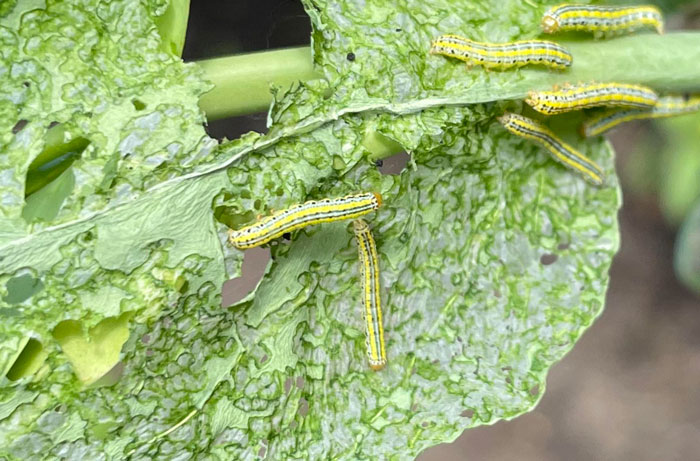 Image credits: Fluffy-Wishbone1158
Image credits: Fluffy-Wishbone1158The larvae of fungus gnats might feed on your lisianthus roots, and they can damage your plant. To avoid this, ensure you don’t overwater your lisianthus. They are prone to powdery mildew, botrytis, or leaf spot. Mites, aphids, thrips, and white flies can also attack your lisianthus. However, insecticidal soap or neem oil can help you control most pests and diseases.
Your lisianthus might also be vulnerable to viruses and stem cankers. The best way to go around this is to eliminate the plants impacted by it.
Common Problems
Sometimes, your lisianthus might face a few problems. Here’s how to solve them:
Poor Flowering
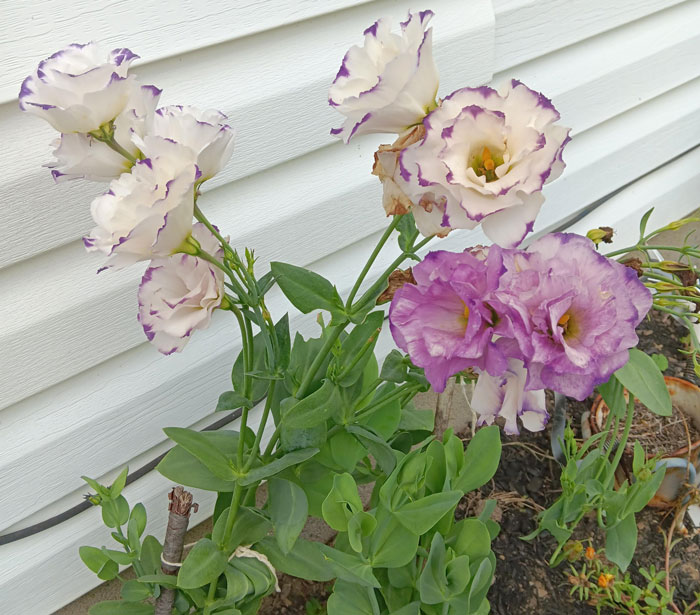 Image credits: CJgreencheetah
Image credits: CJgreencheetahReason: Insufficient light or fertilizer with excess nitrogen ratio.
Solution: Ensure it gets six to eight hours of direct sunlight daily. Use a fertilizer with one and a half times more potassium than nitrogen.
Yellowing Leaves
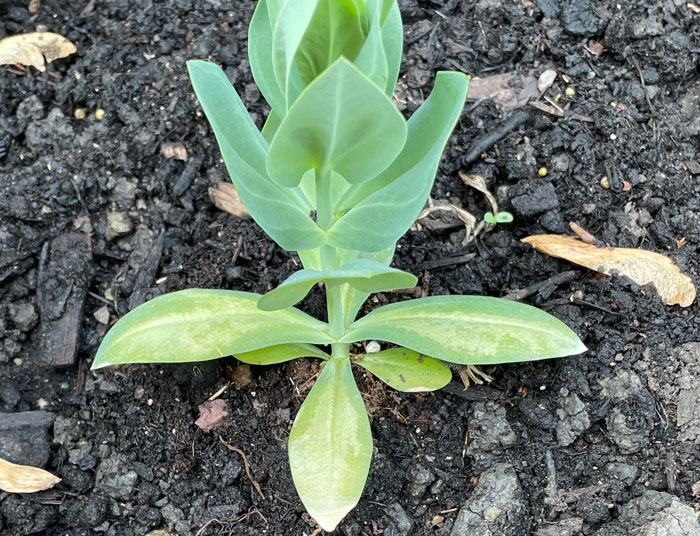 Image credits: Professional_Air6434
Image credits: Professional_Air6434Reason: Overwatering, underwatering, or nutrient deficiency.
Solution: Keep the soil moist, not soggy or dry. Regularly feed it with flowering fertilizer.
Plants Toppling Over
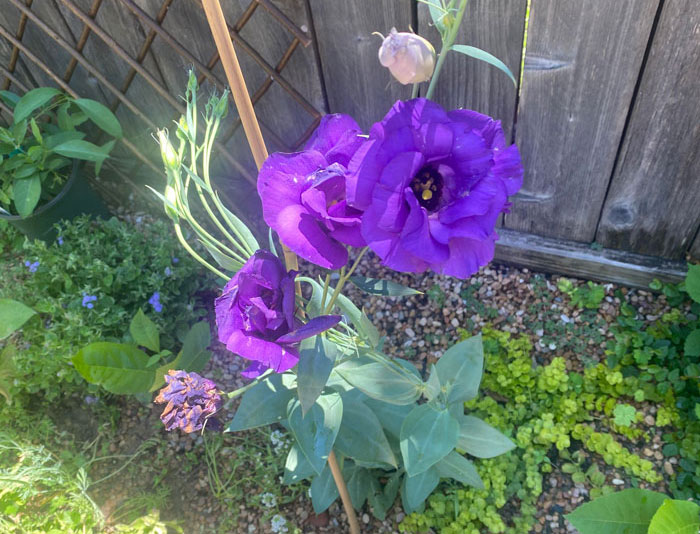 Image credits: tortelliniaglio
Image credits: tortelliniaglioReason: Double blooms perched on thin stems.
Solution: Provide it with grow-through support such as rings and grids.
Popular Types of Lisianthus
Lisianthus has multiple varieties with varying colorful blossoms and sizes. Early summer is when most varieties bloom happily. However, the new cultivars even bloom during peak summer to fall. Let’s look at a few popular varieties.
“Sapphire Pink Rim” Lisianthus
This compact, dwarf variety has white blooms with gorgeous pink edges, excellent for borders or as houseplants.
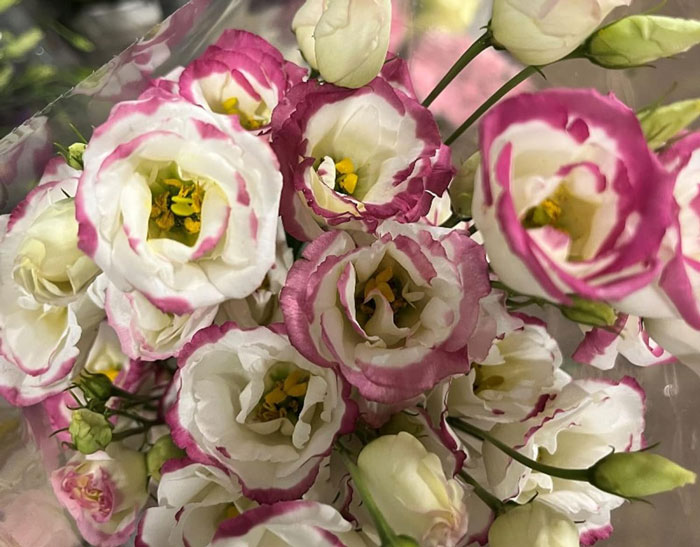
Buy “Sapphire Pink Rim” Lisianthus Seeds
“Sapphire White” Lisianthus
This extremely well-branched dwarf variety has pristine white flowers, perfect for growing indoors.
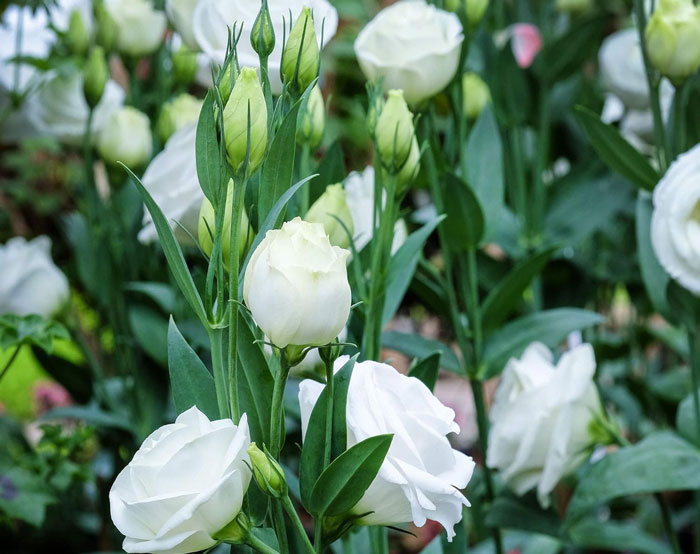
Buy “Sapphire White” Lisianthus Seeds
“Mariachi Pink” Lisianthus
This variety has compact pink flowers with flared and thick petals.
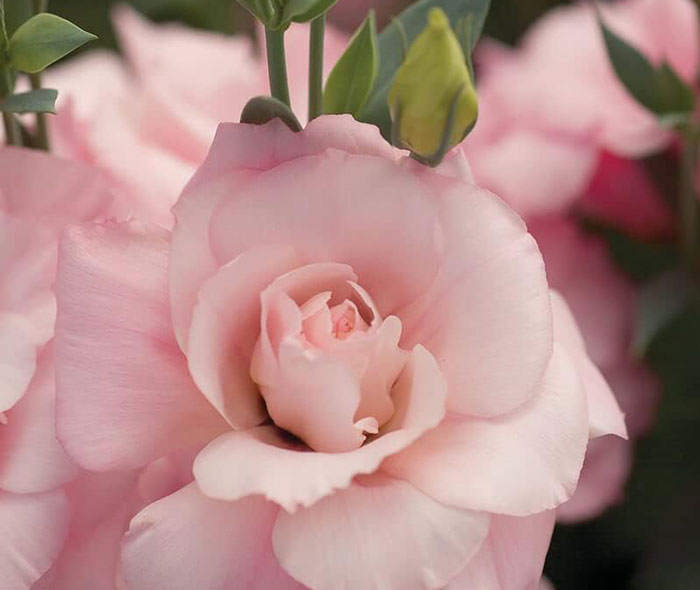
Buy “Mariachi Pink” Lisianthus Seeds
“Rosanne Black Pearl” Lisianthus
This variety has long stems and ruffly blooms with a unique, faded eggplant hue.
Image credits: fiveblossomsfarm
“Rosanne Green” Lisianthus
Perched on long stems, this variety has cupped blossoms with a refreshing green shade.
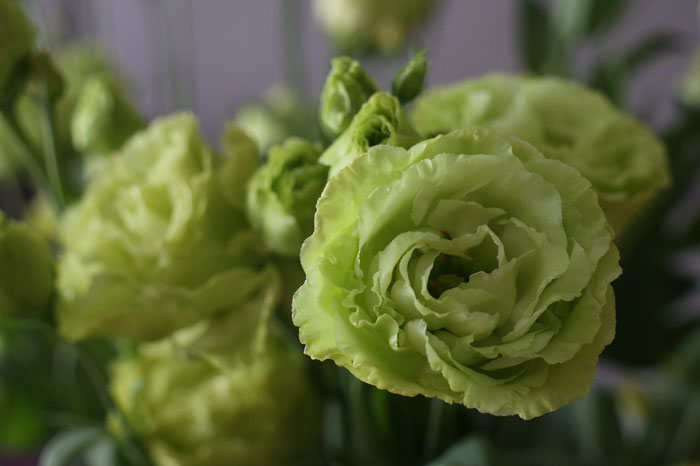
Buy “Rosanne Green” Lisianthus Seeds
Image credits: Mouse23
Companion Plants for Your Lisianthus

Give a few friends to your lovely lisianthus (white, blue, or bi-colored), so they don’t feel lonely. Opt for those with the same care requirements as lisianthus and watch them create a beautiful space worth an Instagram post. Here are some of the most common plant companions for your lisianthus.
- Zinnias
- Periwinkle
- Tickseed
- English Lavender
- Marigold
- Ornamental Pepper
- Sage
Popular Questions About Lisianthus (FAQ)
Before you start growing the extraordinary lisianthus, let’s clear any final doubts by answering the most common questions about them.
Are Lisianthus Toxic to Pets?
Lisianthus aren’t toxic to pets, but it’s always better to take precautions and keep your pets away from them. You can check our guides about keeping your dogs and cats away from plants and flower beds.
What is the Significance of the Lisianthus Flower?
Lore has it that lisianthus flowers signify appreciation as they make us appreciate the beauty of nature. The flowers look fragile but can still grow in tough places, symbolizing strength and an out-going nature. Also, the lisianthus flower is the birth flower of Sagittarius.
Will Deer Eat Lisianthus?
This isn’t entirely true. Usually, there are more palatable options available, and deer tend to avoid lisianthus.

 Dark Mode
Dark Mode 

 No fees, cancel anytime
No fees, cancel anytime 







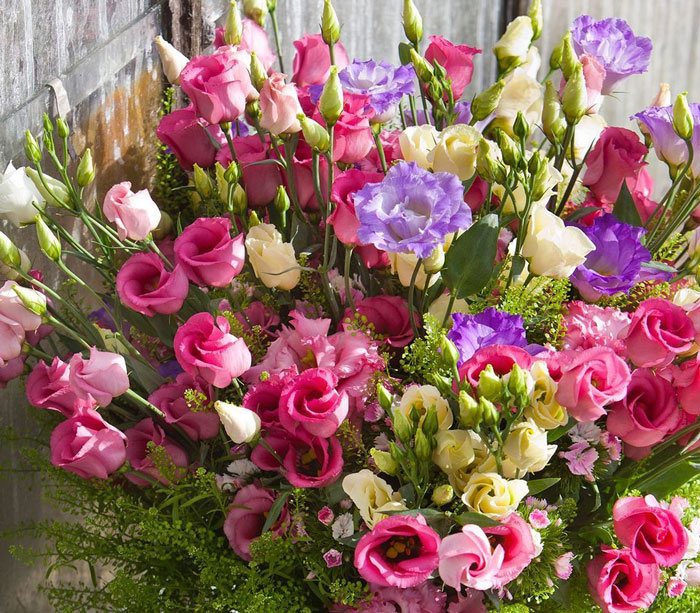

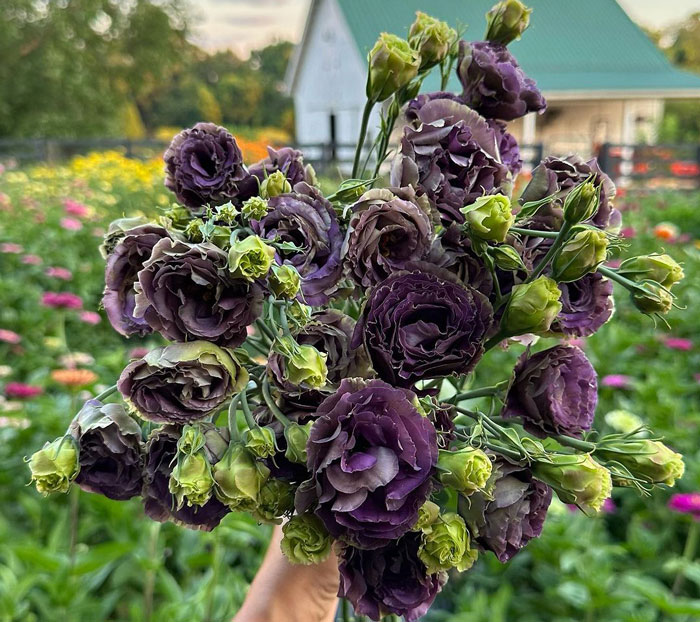












































5
0